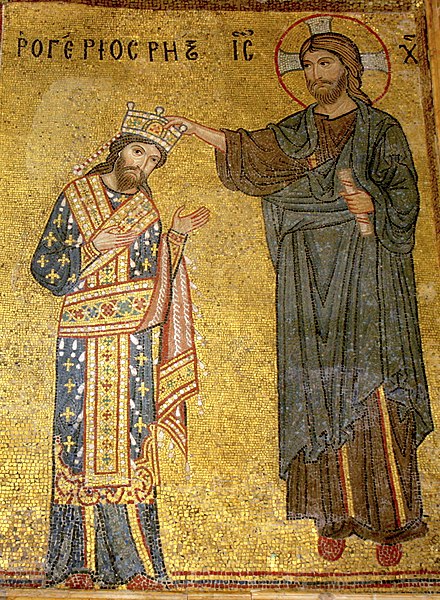A coronation is the act of placement or bestowal of a crown upon a monarch's head. The term also generally refers to the ceremony which marks the formal investiture of a monarch with regal power. In addition to the crowning, this ceremony may include the presentation of other items of regalia, and other rituals such as the taking of special vows by the new monarch, the investing and presentation of regalia him or her, and acts of homage by the new monarch's subjects. In certain Christian denominations, such as Lutheranism and Anglicanism, coronation is a religious rite. As such, Western-style coronations have often included anointing the monarch with holy oil, or chrism as it is often called; the anointing ritual's religious significance follows examples found in the Bible. The monarch's consort may also be crowned, either simultaneously with the monarch or as a separate event.

The coronation of Charles VII of France (1429), detail of the painting Jeanne d'Arc (1886–1890) by Jules Eugène Lenepveu
Miniature of Charlemagne crowned emperor by Pope Leo III, from Chroniques de France ou de Saint Denis, vol. 1; France, second quarter of 14th century.
Roger II of Sicily receiving his crown directly from Jesus Christ, mosaic from Martorana, Palermo
An ancient coronation from the Indian subcontinent
A coronation crown is a crown used by a monarch when being crowned. In some monarchies, monarchs have or had a number of crowns for different occasions, such as a coronation crown for the moment of coronation and a state crown for general usage in state ceremonial.
Image: Holy Roman Empire Crown (Imperial Treasury)2
Image: Corona di sant'Edoardo
Image: The Queen at the Scottish Parliament crop
Image: Christian v crown








